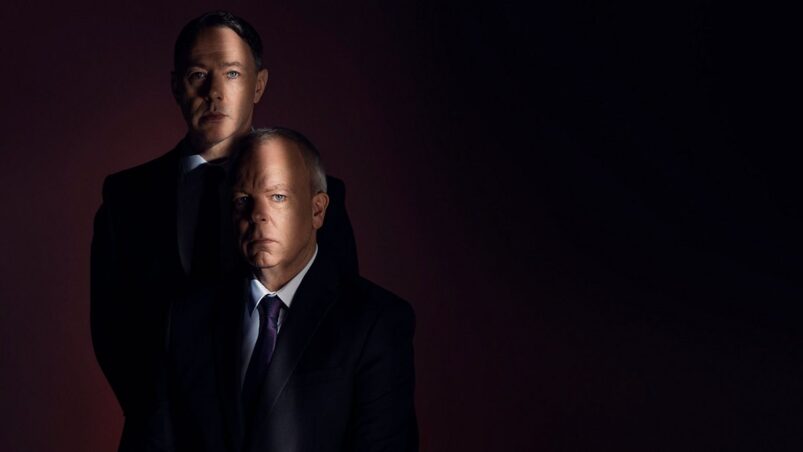It’s ten years since BBC 2 first launched Inside No. 9, the collection of darkly humorous, twisted tales from writing duo Reece Shearsmith and Steve Pemberton. The two were previously best known for shows like The League Of Gentlemen and Psychoville, two sitcoms that regularly veered into horror, playing on all kinds of tropes from that genre in order to get its laughs.
Inspired by an episode they had written for Psychoville, which focused on just two of its ensemble cast in the limited setting of a single room, Pemberton and Shearsmith pitched the show to BBC 2 back in 2012, shortly after Psychoville had been cancelled. The idea they presented was for an anthology show which could do something entirely different each week, but which would consist entirely of these kinds of small-scale bottle episodes, set entirely in one space, with a limited set of characters.
As a British anthology with horror, it has of course been most often compared with Black Mirror – but Inside No.9 carries throughout a much more unique sensibility. While some episodes touch on some incredibly dark themes, it retains throughout the kind of macabre sense of humour that Shearsmith and Pemberton are known for, whilst the limited space each episode restricts us to gives each instalment the feel of a short play more than anything else.
At the same time, Inside No. 9 carries with it a broad range of influences that hark back far more to previous anthology shows, such as Roald Dahl’s Tales Of The Unexpected, as well as to other staples from older periods of British television, and of course cult horror cinema.
With each episode centred around an entirely different plot and characters, and often even, tackling entirely different genres, Inside No. 9 is a show with an incredibly wide range of material. With this in mind, we take a look at some of the best episodes over the course of its run, over eight seasons and several specials.
9. The Harrowing

An often unsung entry from Inside No. 9’s first season, this one works really well simply for how it fully leans into pure camp horror. Responding to an ad for a housesitter, schoolgirl Katy (Aimee Ffion-Edwards), arrives at an old, isolated mansion that could be straight out of any gothic horror period piece.
The house itself is mostly without lights or heating, and filled with paintings depicting Hell. The owners are two mysterious, highly eccentric siblings, who explain that they care for a third, unseen brother, who is disabled and bedridden, but who has a bell to ring if needing assistance. The whole episode has a wonderfully creepy feel to it. There’s still plenty of fun comic moments throughout, especially in how much the two siblings seem to lean into various gothic tropes. At the same time, it is perhaps as close to full on horror as the show ever gets, with the ending in particular being genuinely chilling.
8. Dead Line
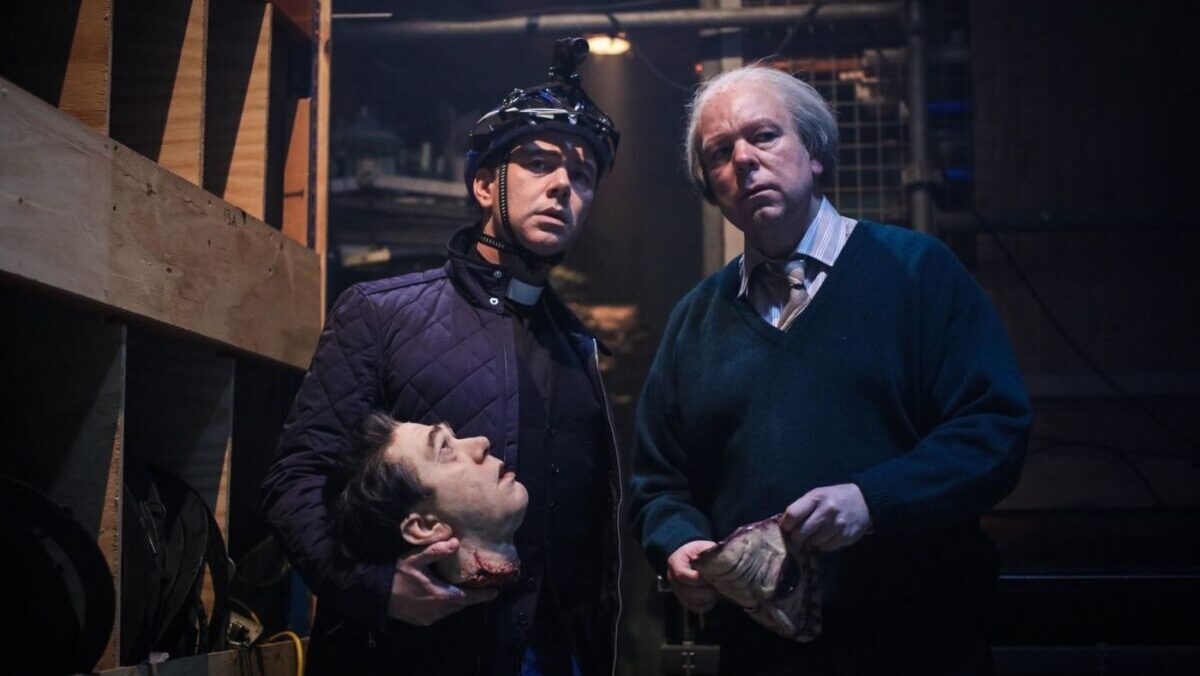
This ingeniously executed ‘live’ episode, which sees Inside No. 9 tackling a format that was common for television production back in the fifties and sixties, is one which, inevitably, will never work as well as it did when watching on broadcast, where viewers were tricked into thinking this was genuinely a live transmission gone wrong. We open on what appears to be a relatively standard story for the show, but filmed in the paired down, basic style that is to be expected of live broadcasting. From there we see the sound intermittently cutting out, then the image, then told that a repeat is being played instead.
The episode then proceeds to cut from what appears to be footage from behind the scenes, from a Go-Pro camera, and archival clips from Most Haunted, as it depicts a haunting taking place right then and there, hijacking the airwaves and interfering with the very episode that you’re watching.
It’s an undeniable part of the appeal of live drama – what if there’s a technical breakdown, what if an actor flubs their lines or misses their cue? Inside No 9 uses this to create a piece of television that feels genuinely interactive, where the format of a live broadcast helps – in much the same way as the infamous Ghostwatch broadcast in the 1980s – to sell the illusion of this being real. Like the season eight episode, 3 by 3 (which was presented as being an actual episode of a game show), it doesn’t work on the same level when you’re watching on iPlayer, knowing this is all part of its hook. Nevertheless, it remains an incredibly well-put together piece of television that masterfully plays with viewers’ expectations.
7. Diddle Diddle Dumpling
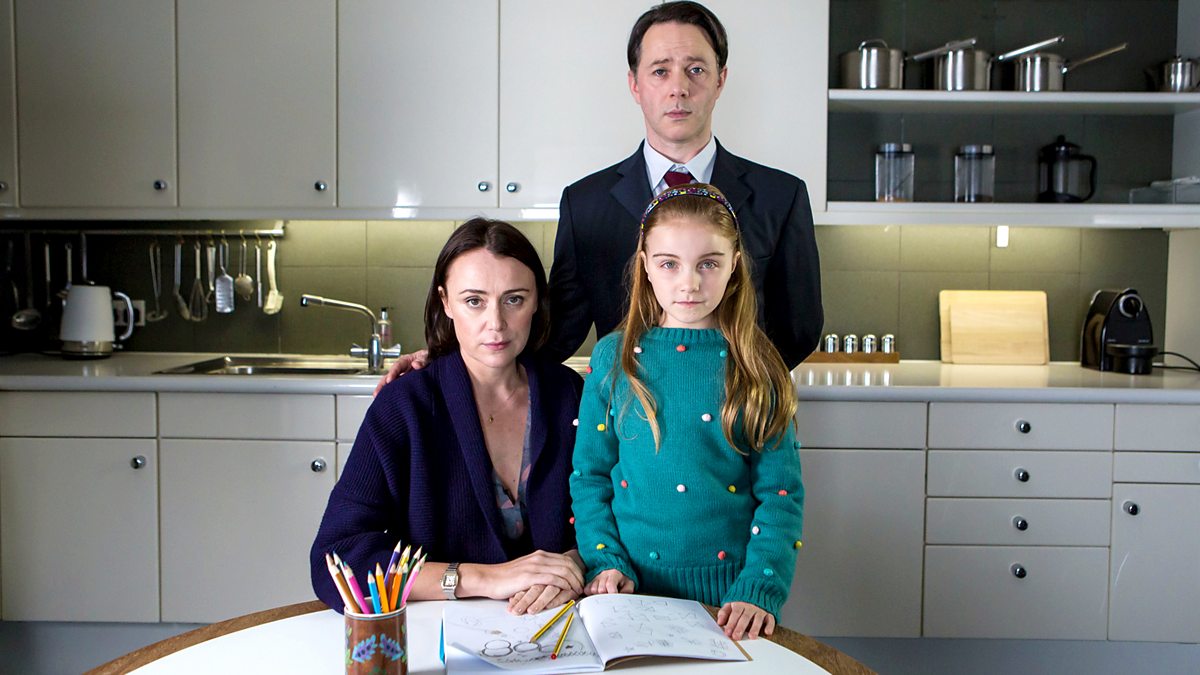
A man goes running one morning, and finds a lone shoe, just sitting on its own, on the corner of a road. Rather than simply leaving it alone, as most would, he decides he must track down the owners, and from this seemingly innocuous start, becomes increasingly obsessed. It’s a great display of Inside No. 9’s own particular brand of comedy, as we see Shearsmith’s character become more and more unhinged, neglecting his actual search for work and growing in hostility and defensiveness towards his bewildered family and friends.
The scene where a caller finally comes to pick up this mystery shoe is gold, as we see how emotionally invested in his search he has become, and finds great difficulty in parting with it. Shearsmith has particularly excelled throughout his career at playing characters that are highly strung and uptight, and this is perhaps the best example of this. The slow pace meanwhile, as well as the score from Vivaldi, helps to heighten the sense of claustrophobia that builds, as he seems to lose all sense of proportion.
6. Sardines
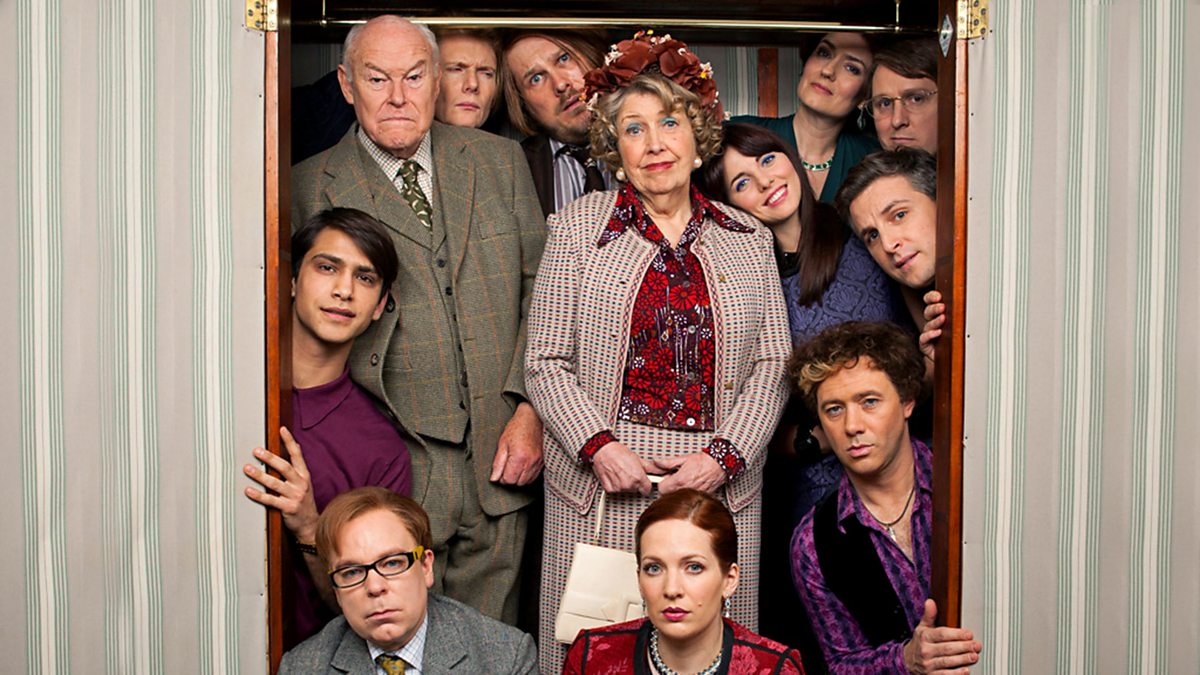
The very first episode of Inside No. 9, this is pretty much the perfect mission statement for the show. Set during a wealthy couple’s engagement party, it follows a game of Sardines, in which players find a hiding space, then are joined in the same space by anyone who finds them. Through this device, the episode wrangles its twelve disparate characters into becoming stuck not just in the same room, but the same cramped, stuffy wardrobe.
In this enclosed space, the tension quickly rises, in what makes for a tightly written, painfully awkward comedy that slowly reveals some truly sinister undertones underneath. It’s a great episode for selling the tone of the show, but also how it would go on to differ from the more sitcom-orientated feel of Pemberton’s and Shearsmith’s earlier works.
5. To Have And To Hold
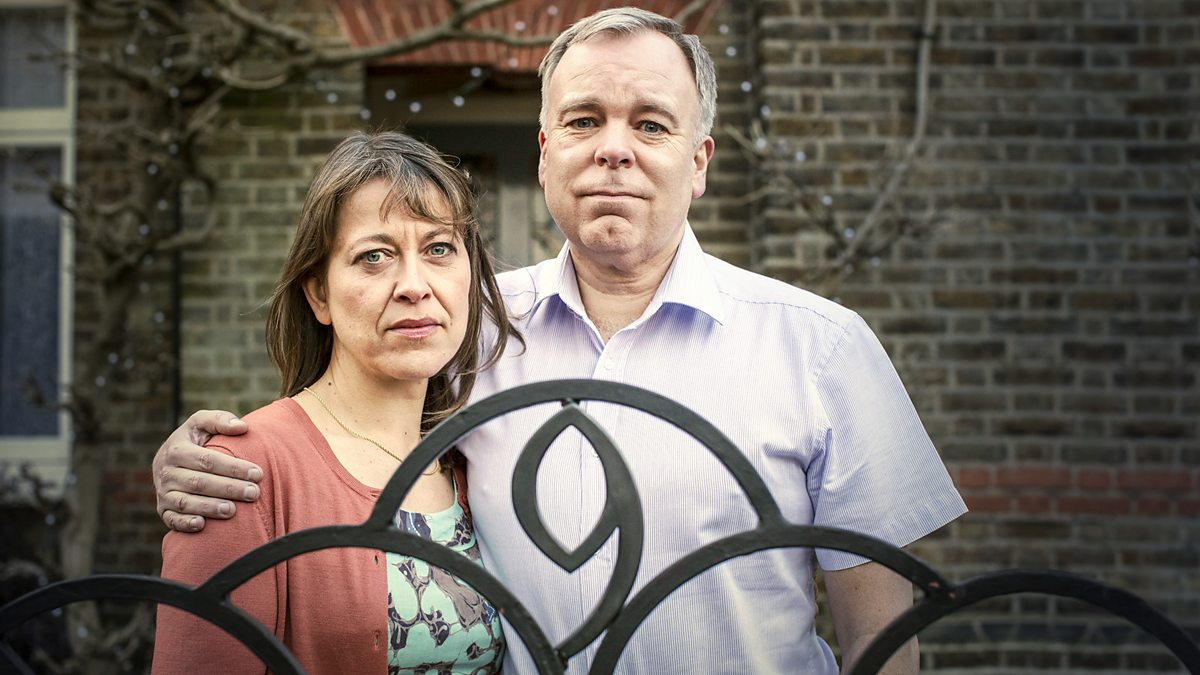
Inside No. 9 delights in nothing quite so much as throwing up unexpected twists and turns to the narrative, and how well it carries these off often makes the difference in which episodes stand out from the rest. To Have And To Hold is a great example of one of these, it being one in which the whole thing completely shifts gears at the midway point, abruptly reframing everything we’ve already seen prior.
The episode starts out as a grounded, slice-of-life examination of a marriage that’s falling apart. We’re treated to several excruciating snapshots of this couple’s existence, as we see them both failing to meet the others’ needs, bringing up old quarrels, or struggling to spice up their love life, with obvious reluctance from husband Adrian (Pemberton). Then, at the halfway point, in a chillingly simple shot, we get the reveal of what he has been keeping secret from his wife, and the whole nature of the piece is changed, in what makes for a moment that feels truly disturbing, and yet all too plausible.
4. The Trial Of Elizabeth Gadge

One of the episodes that most closely resembles the comedy-horror Shearsmith and Pemberton had been known for prior, this brilliant slice of gothic horror comedy sees Inside No. 9 doing a historical piece, set in 1640s England at the time of the witch hunts. For a tidy fee, two famed witch hunters have come to oversee a witch trial in the small village of “Little Happens,” in what one character states is the most exciting thing to have happened in the village “since the escaped cow.”
We then follow the proceedings, as the elderly woman in question is interrogated and duped by Shearsmith’s vicious con artist, in a knowing pastiche of all the folklore and history surrounding witchcraft. The influence of films like The Witchfinder General is obvious here, especially with Shearsmith doing his best Vincent Price impression, whilst the script absolutely sings. The late David Warner is particularly good here as the masochistic, easily excitable old Magistrate, hungry for the tourism that’s being attracted to the village and smuggling away supposed torture instruments for his own gratification.
3. Wise Owl
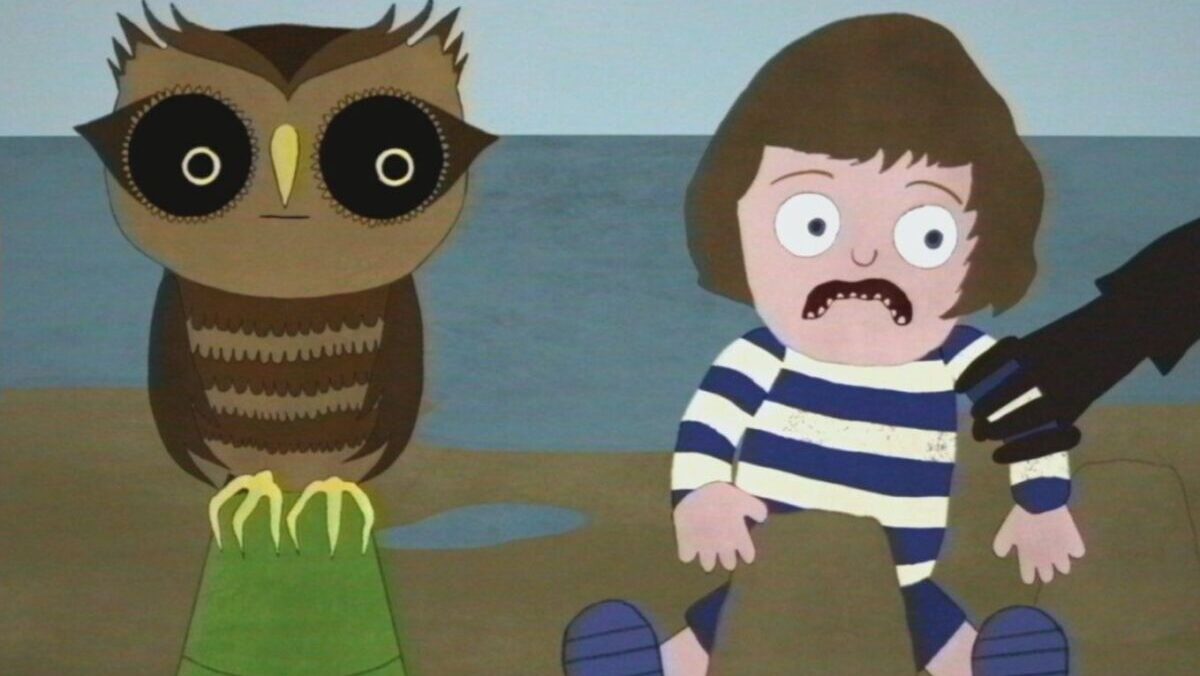
As with much of their work, this episode, which wraps up the seventh season, clearly pays homage to much from earlier decades of film and television, as it opens with footage that’s presented as segments from an old children’s cartoon, in a near-perfect recreation of the look and feel of old public information films from the seventies. These animated segments depict Wise Owl, a kindly and benevolent figure, who warns children of the various dangers that could be lurking around every corner. We then cut to Ronnie, a now middle aged man in the modern day who is contemplating suicide, and who’s played beautifully by Shearsmith, displaying a real vulnerability and sense of trauma throughout.
For much of the episode, we find out only very little about him, as we see him sitting around in this house, in the dark, experiencing disturbing visions, and, in a macabre bit of dark comedy, performing some amateur taxidermy on the neighbour’s deceased rabbit. All the while, we cut to the same animated segments, which become progressively darker throughout. The revelations that come towards the end are perhaps the darkest in the whole show, but the final moments also manage to be incredibly powerful, as well as making for a chillingly effective piece of commentary on what we now know, of what was happening behind the scenes of many of those relics from the seventies.
2. Cold Comfort
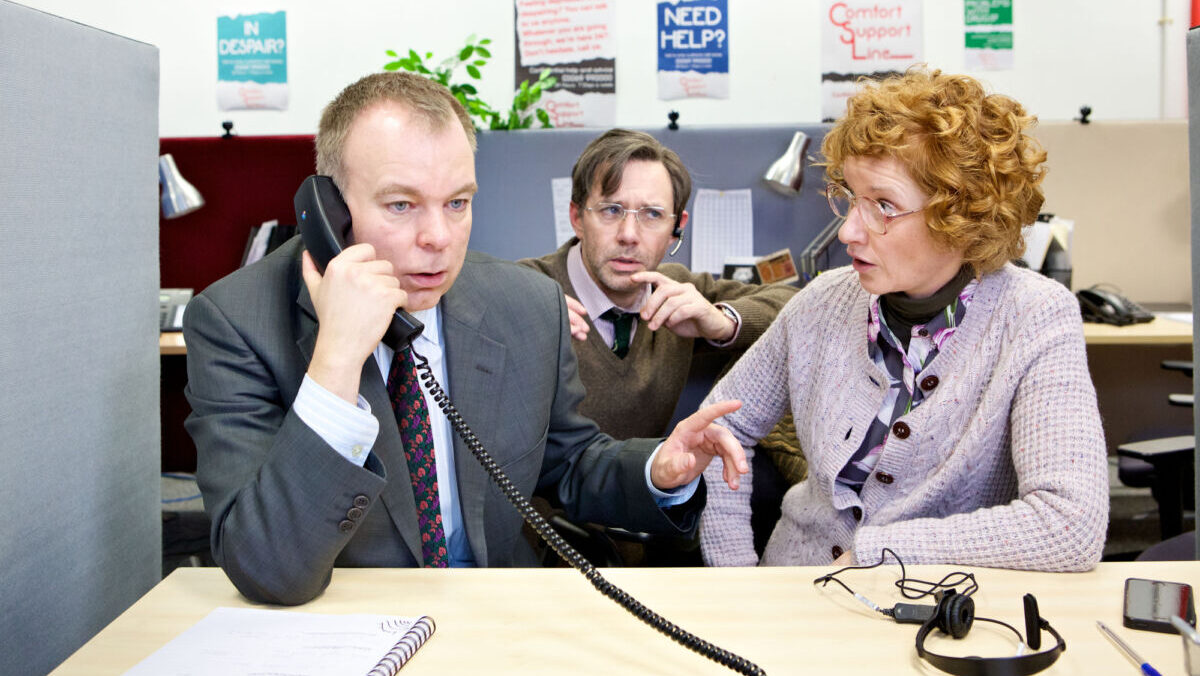
This episode perhaps shows best how much can be done with the limited spaces Inside No. 9 tends to work with. Here, it’s filmed almost entirely as a direct close up, through the frame of a security camera, of one character, Andy (Pemberton), who’s manning the phones at a local crisis-support helpline. This makes for a really unique filming style, as well as simply being a great concept, in how it follows this person who’s sat on the other end of a helpline, expected to assist the public, and showing how affecting this can be.
As someone who’s worked for a phone line, attempting to assist customers in all kinds of different situations, I can tell you the episode does a great job in capturing the full range of conversations that could come up in a place like this, going from the laughably mundane, with strangers just moaning about their travel plans or relationship issues, to other moments that manage to be truly heartwrenching. Pemberton’s performance here is outstanding as we see him gradually be more and more impacted by what he hears. Meanwhile, the framing device of the episode, with the viewpoints through different cameras being shown through a continual split screen, is really cleverly done, and adds a whole other level to the drama.
1. The 12 Days of Christine
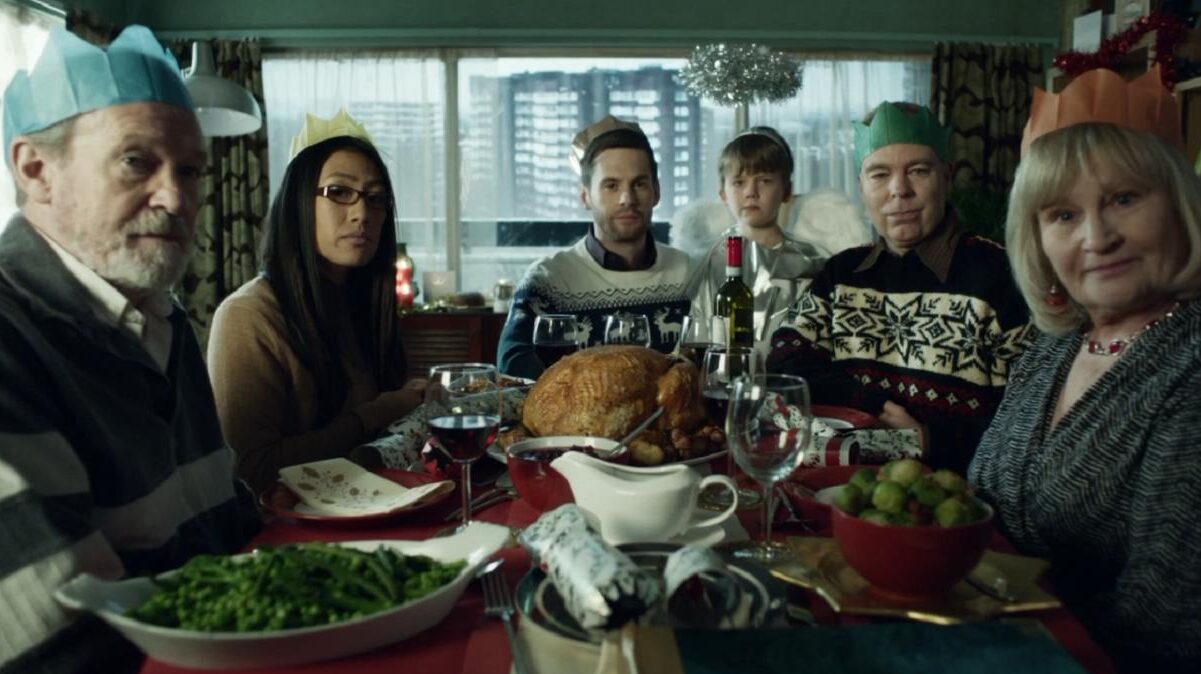
This heart wrenching, tightly-structured episode, from Inside No. 9’s second season, won widespread acclaim upon airing, and is perhaps the most jarring and emotionally impactful the show’s ever been.
Starring Sheridan Smith in the lead role, it follows Christine, an ordinary woman, in successive brief snapshots of her life. The narrative continually jumps forward in time, from one Christmas period to the next, from hookups, to break ups, to family and sickness and loss, but not in a way that’s entirely linear – different moments increasingly seem to mesh together, alongside haunting, ghostly sightings of a mystery man in a raincoat.
The ultimate reveal here of what’s ultimately going on is a brilliant one, but what really makes this work so well is the brilliantly captured human drama that’s at the heart of it. Sheridan Smith gives an amazing performance here, and the script is masterfully structured for how it’s here able to capture this short tableau of an ordinary life. It’s a piece that keeps you guessing right till the end, while its final moments hit hard in a devastatingly bittersweet climax.
READ NEXT: Where To Watch Inside No. 9
Some of the coverage you find on Cultured Vultures contains affiliate links, which provide us with small commissions based on purchases made from visiting our site. We cover gaming news, movie reviews, wrestling and much more.


